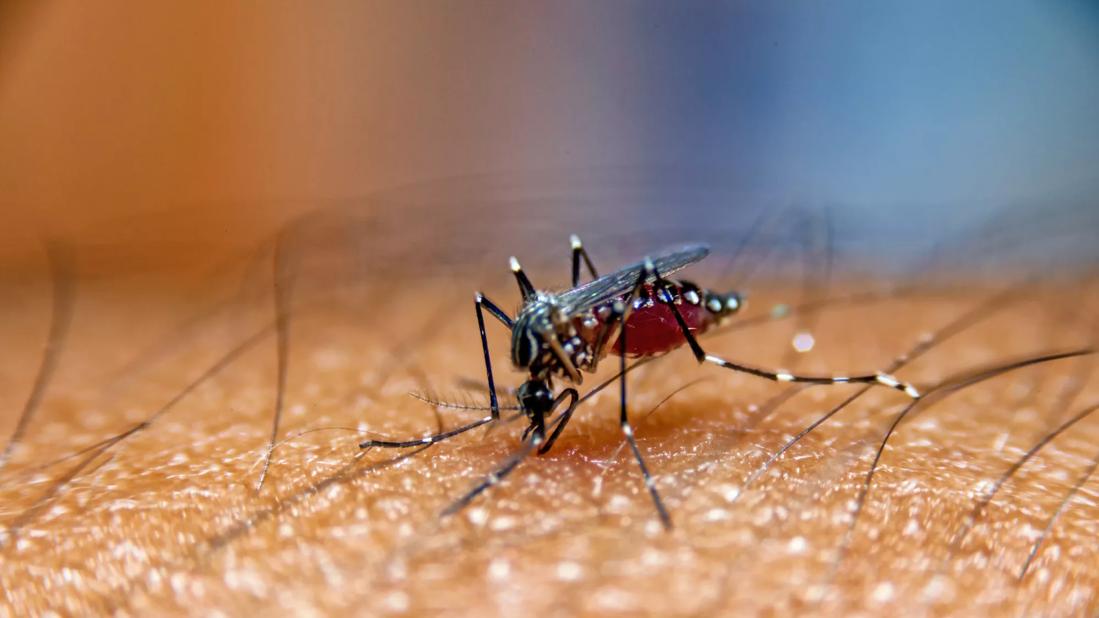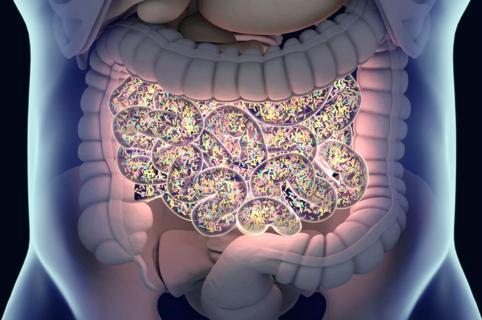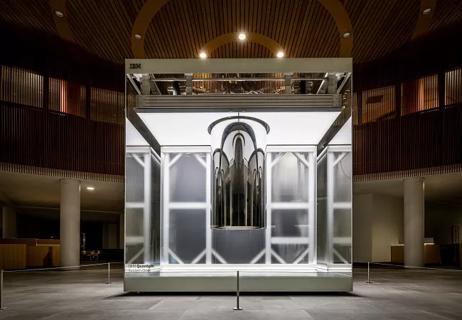Cleveland Clinic researchers’ finding paves the way for new antiviral approaches

A Cleveland Clinic-led research team has identified a key protein-modifying mechanism that the Zika virus (ZIKV) and other mosquito-transmitted flaviviruses use to hijack infected host cells and promote their own replication.
Advertisement
Cleveland Clinic is a non-profit academic medical center. Advertising on our site helps support our mission. We do not endorse non-Cleveland Clinic products or services. Policy
The discovery from the laboratory of Michaela Gack, PhD, Scientific Director of the Florida Research and Innovation Center, raises the prospect of new therapeutics for flaviviruses, a category of viruses for which few drug treatments or vaccines currently exist.
The research was funded by a National Institutes of Health Director’s Pioneer Award, which Dr. Gack received in 2021. Part of the “High-Risk, High-Reward Program,” the Pioneer Award supports accelerating the pace of biomedical discoveries by funding exceptionally creative scientists with innovative research.
“Our findings bring us one step closer to understanding and treating currently untreatable mosquito-transmitted pathogens, which are an ever-increasing threat to global human populations,” says Dr. Gack. “This research was made possible by the NIH and Cleveland Clinic’s Sheikha Fatima bint Mubarak Global Center for Pathogen & Human Health Research. Our commitment to studying viral pathogens and host enzymes in novel ways may ultimately help us develop new, effective treatments to prevent future threats to human health.”
Flaviviruses, whose members include Zika, Japanese encephalitis, West Nile, dengue, Powassan and yellow fever viruses, are arthropod-borne (primarily mosquito and tick) pathogens that can infect humans, causing significant global morbidity and mortality due to hemorrhagic or neurological disease. They are positive-sense, single-stranded RNA viruses consisting of a genome of approximately 11,000 nucleosides and a lipid envelope.
Advertisement
Flaviviruses, like all viruses, lack the ability to independently reproduce and thus depend heavily on the host cellular machinery to replicate. Flaviviruses can replicate in numerous host cell types.
In an infected cell, flavivirus RNA encodes a single polyprotein that subsequently is cleaved by host and viral enzymes into 10 proteins vital to the viral life cycle: three structural proteins that form the virus particle; and seven nonstructural proteins (NS1, NS2A, NS2B, NS3, NS4A, NS4B and NS5) that guide viral replication or disrupt host functions, including immune responses.
Because of their important role in virus replication and immunomodulation, these nonstructural viral proteins are a major subject of interest in antiflaviviral drug design.
The highly conserved NS3 protein is a particularly attractive target because of its multiple functions; it antagonizes innate immunity (as Dr. Gack’s previous research showed), manipulates cellular lipid metabolism to benefit viral replication, and contains a serine protease and a SF2 family helicase whose enzymatic activities are crucial for virus replication. The protease mediates viral polyprotein cleavage and the helicase unwinds double-stranded RNA intermediates during the viral RNA amplification step.
Dr. Gack’s latest research focused on gaining a better understanding of how NS3’s helicase activity is regulated and how that process influences viral replication.
Cells use reversible post-translational modification (PTM) processes such as acetylation to alter proteins and regulate their activity. PTMs can rework protein functions via conformational changes, changes of protein localization within the cell and changes in how proteins interact with other molecules. Viruses also utilize the host PTM system, interacting with it in complex ways to aid infection, replication, dissemination and immune avoidance. This interplay, although not comprehensively understood, results in modification of specific host or viral proteins as well as broader changes in PTMs themselves.
Advertisement
Dr. Gack and her colleagues examined PTMs of the ZIKV NS3 protein, looking for insights into host regulatory mechanisms of viral replication. They used mass spectrometry to analyze acetylation of ZIKV NS3 in two settings — in human 293T cells ectopically expressing NS3 and treated with interferon-beta to mimic an infected state, and in human astrocytic cells infected with ZIKV.
The researchers’ analysis found that the ZIKV NS3 protein undergoes vigorous acetylation in its SF2 helicase domain, primarily at the K389 residue in the helicase’s RNA-binding tunnel. This residue’s acetylated state regulates the helicase’s RNA binding and unwinding abilities and is essential for viral replication.
Using RNA interference, the researchers discovered that ZIKV NS3 acetylation at K389 is controlled by KAT5 gamma, a previously uncharacterized proviral isoform of the host acetyltransferase enzyme KAT5. KAT5 gamma-mediated K389 acetylation enables efficient RNA unwinding, thus aiding ZIKV replication.
Dr. Gack and her colleagues verified KAT5 gamma’s impact on K389 acetylation and ZIKV proliferation. They found that ectopic expression of wild type KAT5 gamma increased K389 acetylation in ZIKV NS3, while expression of a dominant-negative mutant of KAT5 gamma reduced it. Also, silencing KAT5 gamma using small-interfering RNA significantly decreased ZIKV replication in infected human cells.
The KAT5 enzyme is mainly found in cell nuclei, but ZIKV replicates on endoplasmic reticulum-derived membranes, where the NS3 protein binds and unwinds viral RNA using the helicase activity. Dr. Gack and her colleagues analyzed the subcellular localization of KAT5 gamma in uninfected and ZIKV-infected cells using immunofluorescence microscopy. They found that KAT5 gamma relocalizes from the nucleus to endoplasmic viral replication complexes after ZIKV infection.
Advertisement
As a next step, the researcher team looked at the NS3 proteins of other important mosquito-transmitted flaviviruses: West Nile, dengue and yellow fever virus. Dr. Gack and her colleagues also detected NS3 acetylation in human cells infected with those flaviviruses, suggesting it is a conserved regulatory viral PTM.
Current drug development strategies seek to disable viruses by inhibiting a particular viral enzyme directly. For flaviviruses, that means targeting either NS3 or NS5 — a logical choice considering their important enzymatic functions and conserved status across flaviviral members, but a difficult prospect because their active sites are difficult to target.
The discovery by Dr. Gack’s team of KAT5 gamma’s critical role in NS3 acetylation and flaviviral replication presents an alternative antiflaviviral approach. It is the first step toward designing inhibitory molecules to prevent viral replication and treat infection. Broadly pursuing all KAT5 isoforms as drug targets probably would not be workable since murine experiments have shown that total KAT5 knockout is embryonically lethal. Focusing specifically on KAT5 gamma-targeting agents could stop flaviviral replication while reducing the chance of side effects.
Since nearly all RNA viruses and some DNA viruses encode helicases, the findings by Dr. Gack’s team also indicate the need to investigate whether reversible acetylation plays a similarly pivotal role in regulating the nucleic acid binding and unwinding actions of other viral helicases. If so, finding a way to modulate the acetylation state of viral helicases and other viral proteins that might undergo acetylation represents an additional strategy for antiviral drug development.
Advertisement
Advertisement

First full characterization of kidney microbiome unlocks potential to prevent kidney stones

Researchers identify potential path to retaining chemo sensitivity

Large-scale joint study links elevated TMAO blood levels and chronic kidney disease risk over time

Investigators are developing a deep learning model to predict health outcomes in ICUs.

Preclinical work promises large-scale data with minimal bias to inform development of clinical tests

Cleveland Clinic researchers pursue answers on basic science and clinical fronts

Study suggests sex-specific pathways show potential for sex-specific therapeutic approaches

Cleveland Clinic launches Quantum Innovation Catalyzer Program to help start-up companies access advanced research technology